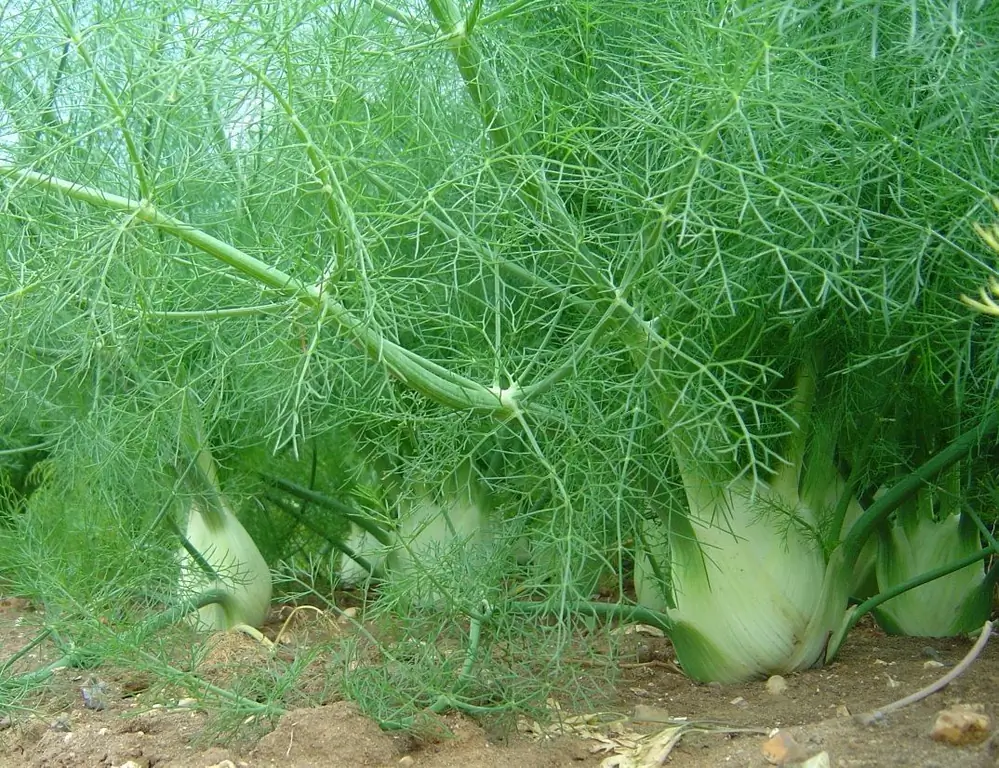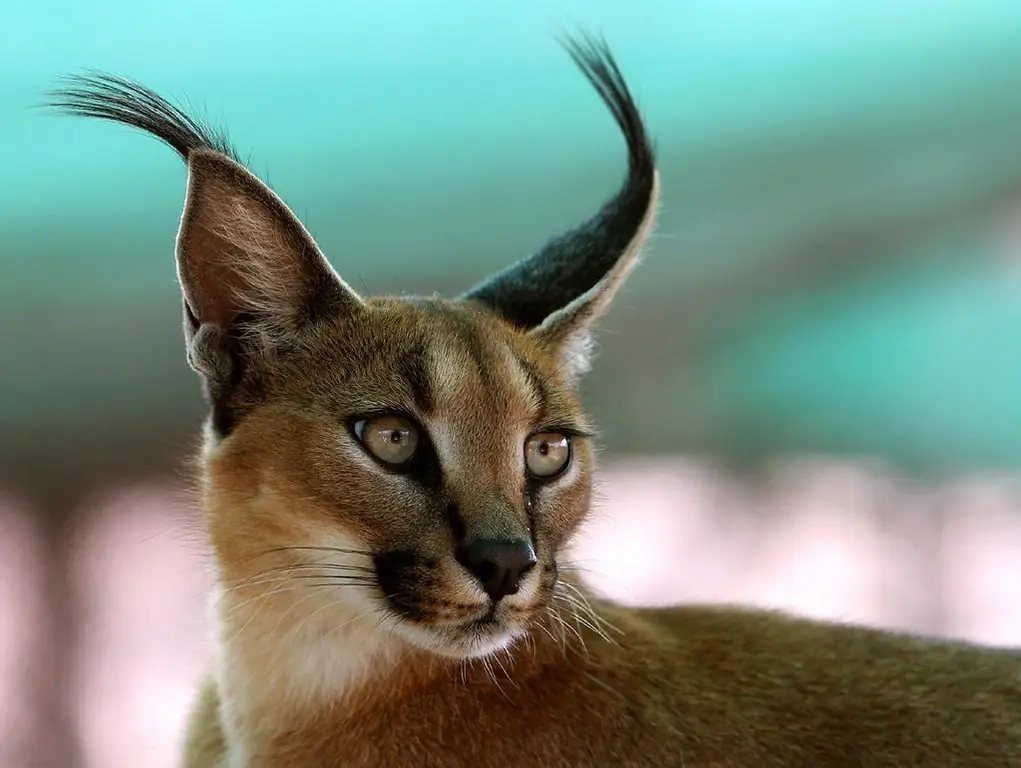
Table of contents:
- Author Bailey Albertson [email protected].
- Public 2024-01-17 22:26.
- Last modified 2025-06-01 07:32.
Exotic guest from Brazil - hatiora

Among the variety of indoor plants, there are very unusual species. One of the brightest representatives of exotic species is hatiora. At first glance, it can be mistaken for an artificial flower, because the plant consists of many stick-segments. Due to its extraordinary external appearance, the hatiora has a comic name "dancing skeleton", because the stem consisting of segments resembles joints with bones.
Content
- 1 History and description of the flower
-
2 Suitable species for indoor keeping
- 2.1 Hatiora gaertneri
- 2.2 Hatiora herminiae
- 2.3 Hatiora rosea
-
2.4 Hatiora salicornioides, or salicornia
2.4.1 View video
-
3 Plant care
- 3.1 Temperature conditions
- 3.2 Lighting
- 3.3 Watering and air humidity
- 3.4 Soil selection
-
3.5 Fertilization
3.5.1 The best fertilizers for a flower - table
- 3.6 Transfer
- 3.7 Flower care video - video
- 4 Reproduction of a plant at home
-
5 Possible problems and how to solve them
5.1 Correction of care errors - table
-
6 Diseases and pests
-
6.1 Disease and pest control - table
6.1.1 Typical plant pests in the photo
-
History and description of the flower

Hatiora is a real home decoration
Hatiora is an inhabitant of the rainforests of Brazil. This plant belongs to the genus of epiphytic and lithophytic cacti. It got its name in honor of the Englishman Thomas Harriott, who traveled extensively across the American continent and made its detailed maps. Some hatiors grow on trees (epiphytes), while others grow in rock crevices (lithophytes).
Hatiora bushes are completely segmented. In some species they have a flat shape, in others they are bottle-shaped or cylindrical. There are no leaves or thorns on the plant. On the areoles, you can see thin, barely noticeable hairs. The stems of young plants are erect, but over time they grow and droop. At the ends of young shoots, funnel-shaped flowers with petals of various colors develop.
Suitable for indoor use types
Of the types of hatior, only four are kept indoors.
Hatiora gaertneri
This species has flat, oval-shaped segments. Notches are clearly visible along the edges of the segments, and areoles at the tops. Drooping shoots, deep green color. The flowers are crimson-red, rather large (4-5 cm in diameter), located at the tops of the stems and at the junctions of the segments.

Hatior Gartner
Hatiora herminiae
Differs in low (up to 30 cm in height) shoots, consisting of cylindrical segments. The size of each individual segment is 5 cm, and the diameter is 0.5 cm. Areoles are located over the entire surface of the stems, have several stiff hairs. 2 crimson-pink flowers up to 2.5 cm long appear from the apical areoles.

Hatiora Germina
Hatiora rosea
The stems resemble Gartner's hathiora - segments of the same flat-oval shape. However, there are also differences. The bush has a bluish-green or reddish color, the segments are small (up to 2.5 cm long), serrated along the edge, pubescent with hairs. The flowers are crimson or pink, up to 4 cm in diameter.

Hatiora pink
Hatiora salicornioides, or salicornia
The most unusual kind, it was he who received the name "dancing bones cactus" or "dancing skeleton". Small (2-3 cm) clavate-shaped segments form thin shoots. The many branched stems give the bush an airiness. The flowers are medium-sized, yellow, orange or salmon.

Hatiora salicata
View video
Plant care
The tropical guest is unpretentious and easy to grow. It grows and develops well in indoor conditions, does not require pruning, shaping or any special conditions of detention. However, in order for the plant to show itself in all its glory, it is necessary to follow certain rules of care.
Temperature regime
Hatiore needs a short rest period, so it is important to maintain an optimal temperature during different stages of the growing season. Active growth and flowering occur in the summer months, at which time the air temperature should be 22-27 ° C. By the end of September, the plant goes into a dormant phase and is kept for 1.5-2 months at 12-16 ° C.
Lighting
The plant feels best in bright, but diffused light. The best option is east or west windows. On the south side, the hatior must be shaded or kept not on the windowsill, but on a stand next to the window. Hatiora can also grow in rooms facing north, but in this case, you should not expect abundant flowering from it.
Watering and humidity
Hatiore, unlike most cacti, requires high humidity. The explanation for this is simple - the homeland of the species is the humid tropics, where it rains constantly. During the period of growth and flowering, the bushes are sprayed once a day, preferably in the evening. In the autumn-winter months, spraying is not carried out.
Watering the flower is not too abundant, avoiding stagnation of water. Excess moisture must be drained from the pallet. During the period of active growth of shoots and during flowering, moistening is carried out as the earthen coma dries up. During the dormant period, water is given very limitedly, only so that the earth does not completely dry out.

Hatiora feels great in high humidity
Soil selection
Hatiora prefers light, breathable soil with a high nutrient content and a slightly acidic reaction. In poor soil, the plant will not bloom. The best soil mixture for this plant consists of components such as:
- sod land;
- leafy land;
- humus;
- sand or perlite.
All components are mixed in equal parts. At the bottom of the pot, a good drainage layer of broken shards, expanded clay or pebbles is needed.
Fertilization
During the dormant period, the plant is not fed. When the active formation of new shoots begins, mineral fertilizers are applied every two weeks. At the same time, it is necessary to focus on the phase of the life cycle - during the growth of the green mass, fertilizing with an increased nitrogen content is given, and when the first buds appear, they begin to apply potash fertilizers.
The best fertilizers for a flower - table
| A drug | Dosage |
Application time |
| Vito 4 | 1 cap for 2-3 liters of water. | Shoot growth period, every two weeks. |
| Master for flowering plants | 5 g for 2 liters of water. | During flowering, every 7-14 days. |
| Master for cacti and succulents | 5 g for 2 liters of water. | Growth period, after 7-14 days. |
Transfer
Young specimens are transplanted into larger pots each year. Adults who have reached the age of three, the plant should be transplanted after 2-3 years. Strongly overgrown large bushes - once every 5 years.

With proper care, the hatiora will become a real window decoration
Flower care video - video
Plant propagation at home
Hatiora reproduces easily in a vegetative way:
- After flowering, the tops of the stems with 2-3 segments are broken off. Dip the break points in crushed charcoal and leave the cuttings to dry overnight.
- The next morning, cuttings are planted in small pots or plastic cups filled with a mixture of equal parts of coarse sand and peat.
- The containers are regularly moistened, preventing water stagnation.
- After 1.5-2 months, the cuttings will take root, and the next year they can be planted in permanent pots.
Beautifully flowering species are often grafted onto the perennial prickly. This applies to Hatiora Gartner and Hatiora pink. The procedure is carried out in the summer. Sequence of work:
- At the pereskii, the entire branched part is cut off, leaving only an even stem. In a hatior, a stalk with 2-3 segments is broken off.
- The stock (hatiora stalk) is split with a sharp knife by 2-3 cm.
- The graft (cross) is sharpened with a flat wedge on both sides and inserted into the split rootstock.
- The grafted plants are carefully wrapped with adhesive plaster or electrical tape. Make sure that the slices are in close contact with each other.
- They contain the grafted flower at a temperature of about 20 ° C, watered regularly, all shoots below the graft site are removed when they appear.
- After the grafted hatiora starts to grow, the plaster is removed. This usually happens 20-30 days after vaccination.

Hatiora grafting allows you to achieve lush and long flowering
Possible problems and how to solve them
Hatiora is not picky and problems with its cultivation are rare. Why does it sometimes become lethargic and does not please with bloom? Most difficulties arise from improper care and non-compliance with periods of growth and rest.
Correction of care errors - table
Problem |
Causes |
Solutions |
| The plant either does not bloom at all, or there are very few flowers. |
|
|
| Buds and whole segments fall off. |
|
|
| The segments shrivel and wilt despite regular watering. |
|
Move the plant pot to a cooler place and start regular spraying immediately. |
| Light spots on the stems. | Too bright light, direct sunlight. | Do not place the hatior on the south windows or shade at midday. |
| Branching too slow. | Lack of nutrients. | Regular feeding - every 2 weeks. |
| Decay of roots and lower part of the stem. |
|
|
Diseases and pests
With excessive moisture and stagnation of water, late blight or fusarium can strike hathior. Of the pests, the scabbard, spider mite and mealybug are especially dangerous.
Disease and pest control - table
Disease or pest |
Signs of the disease | How to fight |
Late blight |
The stems of the flower acquire a grayish color, wither, rot is pronounced at the root collar. | Treatment with Oxykh fungicide - 5 g of the drug per 2.5 l of water, spray 2-3 times with an interval of two weeks. |
Fusarium |
First, some small areas rot, later the rot spreads over all the stems. | Often times, fighting a disease with chemicals does not work. The most effective way is to completely remove the affected areas. |
Shield |
Brown-red tubercles appear on the segments, the plant is suppressed, slows down in growth. | Treatment with Fitoverm - 5 ml per 0.5-1 l of water, 2-3 times after 7-10 days. |
Spider mite |
First, dark dots from tick bites appear on the stems, then the segments begin to wrinkle and dry out. | Spraying with Fitoverm is the same as in the case of the shield. |
Mealybug |
A white bloom appears on the plant, as if it were sprinkled with flour, the buds wrinkle, new segments fall off. | Isolation of the plant so that healthy specimens do not get infected, spraying with Aktara (4 g per 5 L of water, one treatment). |
Typical plant pests in the photo
-

Shield - Shield
-

Mealybug - Mealybug
-

Spider mite - Spider mite
Hatiora is an unusual houseplant that deserves the attention and love of flower growers. The openwork bushes of this flower are able to bring a touch of tropical exoticism to any interior.
Recommended:
Growing Fennel From Seeds (including Vegetable Seeds) At Home And In The Garden + Photo And Video

Practical tips for growing fennel from seed. Fennel species, varieties suitable for growing in the middle lane
Rice Vinegar: What Can Be Substituted At Home For Sushi, Rolls And More; Apple, Regular And Other Options + Photo And Video

Features of rice vinegar. How to cook it yourself at home. What vinegars and acids can you replace it with? Proportions for different dishes
Stapelia Of Various Types - Features Of Planting And Care At Home + Photo

Simple rules of maintenance and some subtleties of care will help to grow on your own windowsill an amazing African exoticism - stocks
Caracal Desert Lynx: Description And Photo Of The Breed, Maintenance And Care At Home, Where To Buy A Steppe Cat

Caracal in the wild. Features of appearance and behavior. Keeping the steppe lynx at home. Diseases of the caracal. Purchase nuances. Reviews
Serial: Description Of The Breed, Character Of The Serval, Maintenance And Care At Home, Photo Of The Cat

Description, habitat and habits of a bush cat, features of keeping in captivity, hybrids of a serval and a domestic cat
